Size of Cruise Ship Compared to Blue Whale
Article
Helping cruise ships and other mariners detect and avoid whales in Glacier Bay National Park
By Jennifer E. Helm, Sara H. Williams, and Paul M. Lukacs (University of Montana) and Scott M. Gende (National Park Service)
Project Dates
May 2016 — September 2017
Did you know?
Whales are susceptible to collisions with marine vessels, which may cause serious injury or death and can damage vessels. Mariners in Glacier Bay must be vigilant and may need to make active avoidance maneuvers to avoid close encounters with whales.
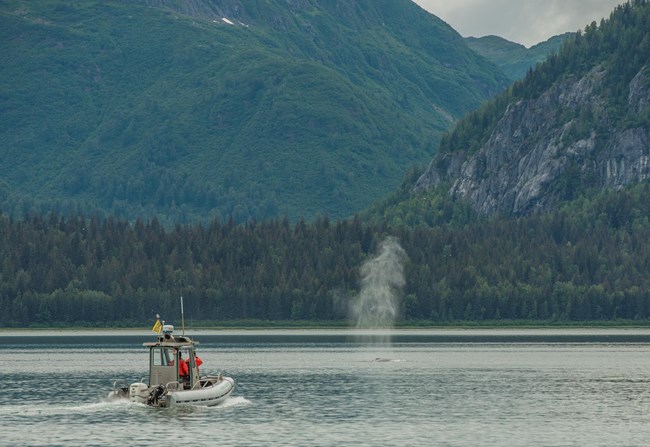
Mark Kelly
Introduction
For many decades, the story of whales has been pretty gloomy. Due to unsustainable and often illegal harvest levels, many whale populations were depleted to the point of near extinction. However, due to a ban on commercial whaling in the mid –1980s, coupled with a collapse in the economic value of whale products, many populations of large whales are rapidly returning to pre-whaling abundances. The population of humpback whales using Glacier Bay is no different; the number of individuals using the park has increased by 4 - 5% every year since monitoring efforts began in 1985.
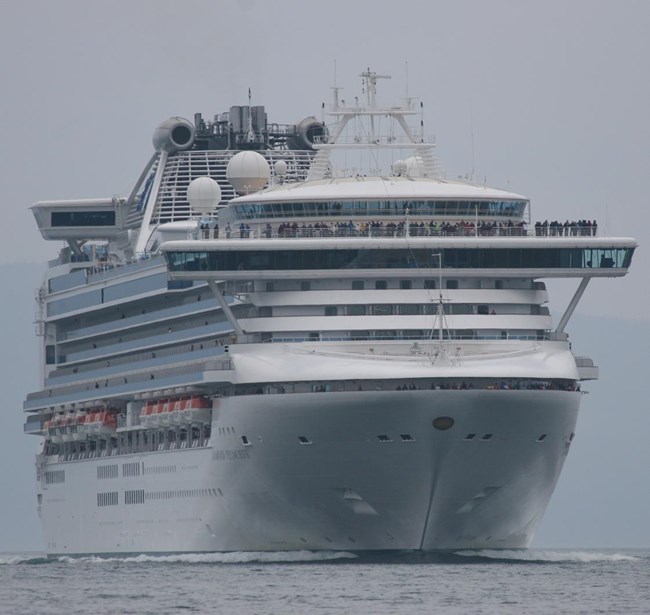
While the large number of whales in Glacier Bay provides tremendous viewing opportunities for visitors, it also means that vessel operators must be vigilant, and may have to modify their course and speed to avoid whales. Lethal collisions continue to be a threat to whale populations globally, and scientific studies have debunked the idea that healthy whales always 'get out of the way' of an approaching vessel. Whales may not be able to pinpoint approaching vessels due to complex underwater acoustics. They may also be engaging in other behaviors, such as feeding or caring for young, resulting in delayed responses to approaching vessels. For cruise ships, avoiding a whales requires that the captain, pilot, or other bridge personnel detect the whale at a sufficiently large enough distance to change course or speed. This often means detecting the whale several kilometers away. Herein lies the issue.
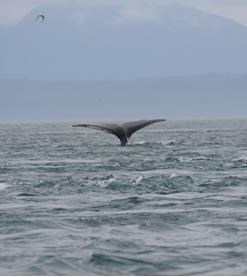
Detection
Studies have shown that the ability to detect whales decreases as distance from the ship increases. The water vapor produced from a whale's spout dissipates after only a few seconds, and may be difficult to see, particularly if the light is poor or the waves are breaking. Humpback whales spend most of their time underwater, which complicates the issue. A whale may spout a few times before embarking on a deeper dive and, after some time, resurface a long distance from where it was last seen. Mariners use these 'cues' to detect whales and predict where they travel and resurface. As such, understanding spouts and other behavior is extremely important for avoiding close encounters and potential collisions.
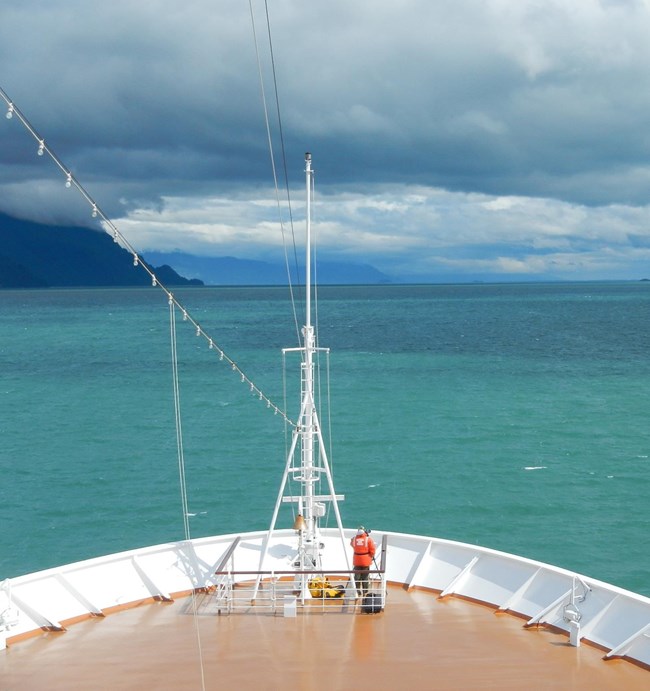
Consider a ship traveling through Glacier Bay at 19 knots (almost 22 miles an hour). A whale surfaces several kilometers away traveling close to, and toward, the path of the ship. However, the wind is blowing and the first spout goes undetected. The whale surfaces a second time and is detected by the ship's bridge personnel. The time between spouts is thus very important. An inter-spout interval of 30 seconds will put the ship over 300 yards closer to the whale before it spouts again. The captain must now decide whether to alter course or speed, considering other navigational issues, such as the presence of other vessels, distance to shore, and the likelihood of a collision if operations are not altered. Yet, since the whale is still far away, the captain needs to see another spout to ascertain the whale's direction of travel. This highlights why it's important to know the number of spouts per surfacing interval. The ship will then travel closer to the whale before the 'actionable' information, i.e., the second detected spout clarifies its distance and direction of travel.
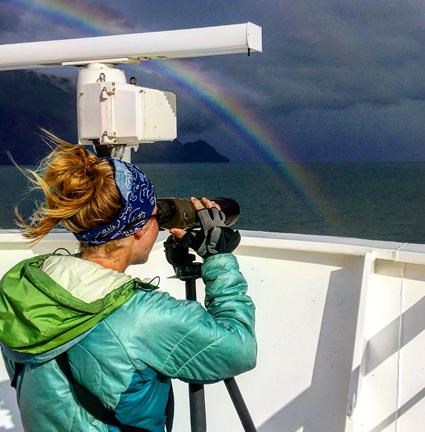
Project Description
In 2015, the National Park Service partnered with the University of Montana on a study to better understand the interplay between whale behavior and the ability of mariners to detect them. The goal is to help inform ship operators about the behavior of whales around ships and identify where search images are most important, conditions when whales may be more or less vulnerable to close encounters or collisions, and, working with marine pilots, to help identify protocols and prudent actions. In 2016, an observer spent 243 hours aboard 41 cruise ships in Glacier Bay standing at the bow with rangefinder binoculars and voice recorders chronicling whale behavior around the ships. The second year of the study will occur in the summer of 2017 when an observer will spend a similar amount of time on effort repeating this protocol. Ultimately, we hope this research contributes to the larger goal of facilitating visitation by cruise ships while protecting important resources such as humpback whales.
Learn More
Contact information: Jennifer.Helm@umontana.edu
Relevant reading materials: http://www.int-res.com/articles/esr2016/30/n030p209.pdf
Last updated: February 19, 2018
spradlinournothe71.blogspot.com
Source: https://www.nps.gov/articles/avoiding-whales.htm
0 Response to "Size of Cruise Ship Compared to Blue Whale"
Postar um comentário